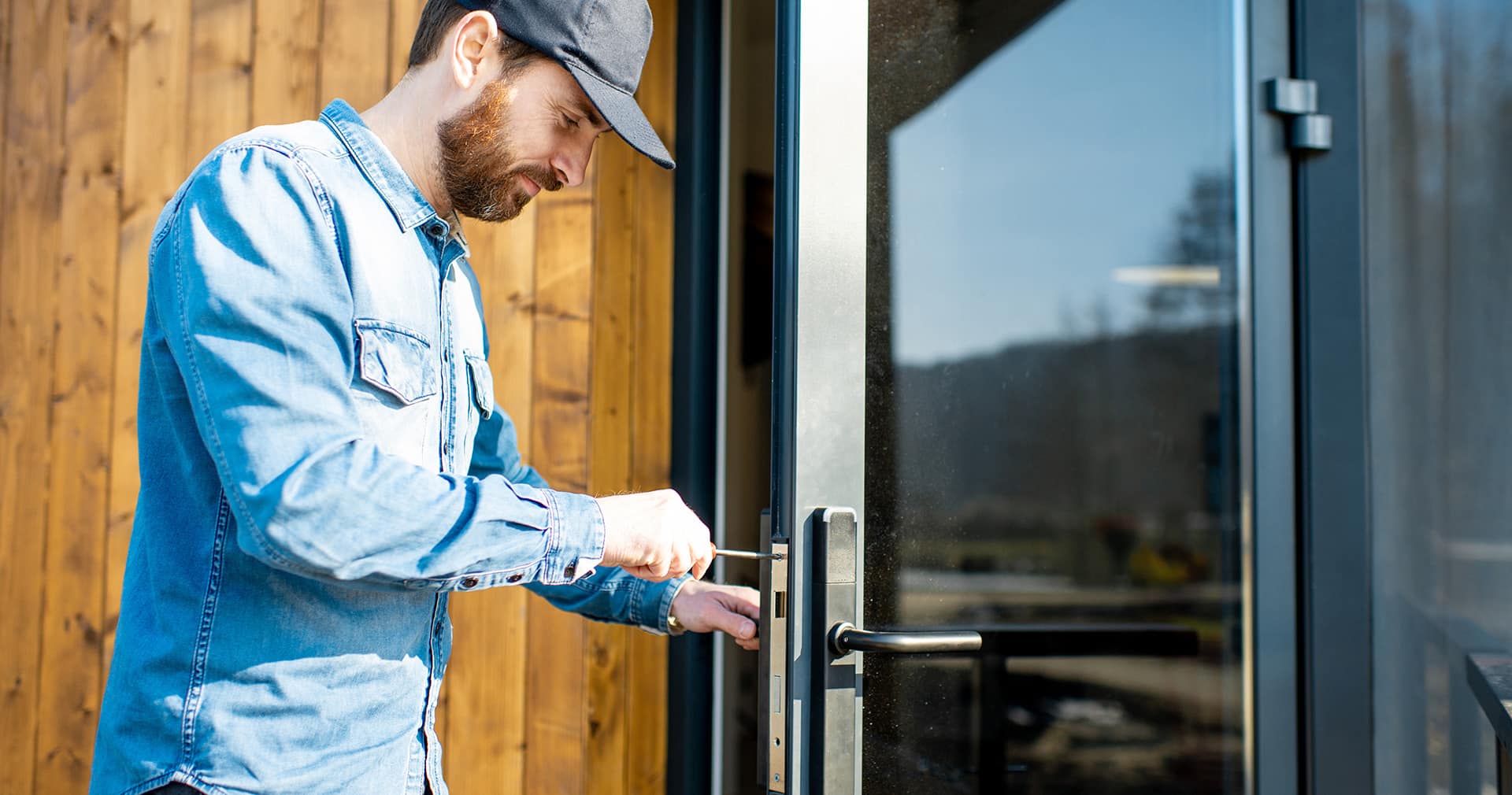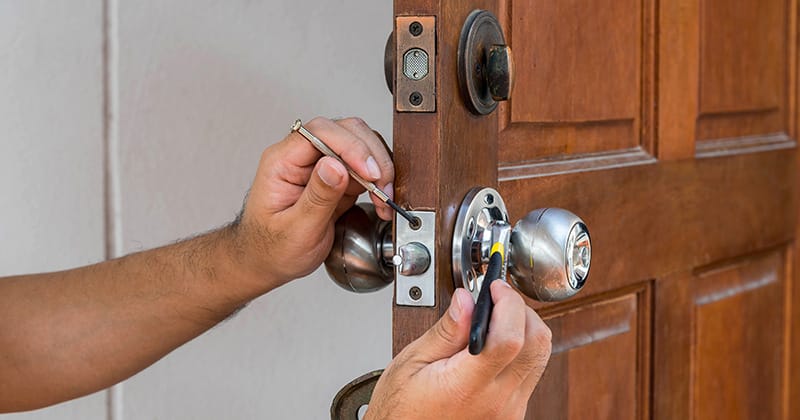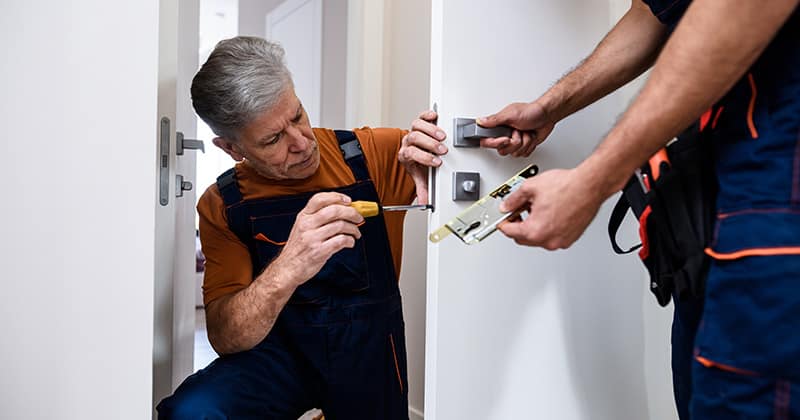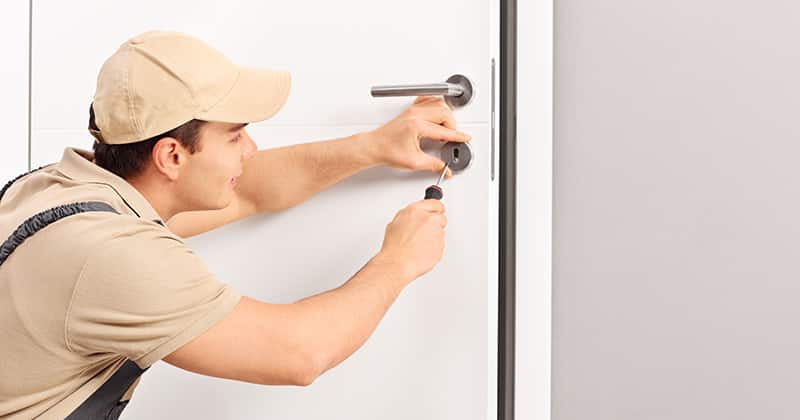
Locksmith industry trends change quickly. New technology arises every few years. Traditionally, locksmiths cut keys and changed locks. Now, they need to program key cards and install smart locking devices.
These developments changed the locksmith industry over the past five years. This article will look at the most recent data. It will measure the market size and employment stats.
Then, we will look at new trends affecting most locksmiths. This includes opportunities for new technologies they need to use. We will also look at the rise of mobile and emergency lockout services.
What Does the Locksmith Market Look Like in the US Right Now?

Locksmithing continues to evolve. The rapid changes have affected the industry market size. New job opportunities are available to those with technical skills. Locksmiths need to understand the factors affecting their industry. These insights can help with planning and career training.
Here is a closer look at today’s locksmith industry.
What Is the Market Size of the Locksmiths Industry in the US?
In 2022, the locksmith industry in the US was worth $2.7 billion. That’s a 10% decline from 2021, largely caused by the COVID-19 pandemic.
Since 2017, the market grew by 1% per year. Long term, the growth is still good. In terms of numbers, there are 24,563 locksmith businesses in the US.
The demand for locksmiths is driven by new security systems. Connected residential security systems are popular. Also, businesses want similar tech-enhanced protections.
How Many People Are Employed in the Locksmiths Industry in the US?

Cities have the most demand for locksmiths. The Bureau of Labor Statistics (BLS) counts professionals. In May 2022, it found 1,000 locksmiths in the New York City/New Jersey metro area. Los Angeles had 770 locksmiths. Dallas, Miami and Chicago had more than 400 lock pros apiece.
California was the most popular state for locksmiths, with over 2,000. Florida, Texas, and New York all had more than 1,000 professionals according to BLS data.
The average locksmith’s salary varies by location and specialty. The BLS puts salaries between $30,710 and $72,830. The mean annual wage is $50,210.
But many jobs have hourly pay. The average per hour is $24.14.
Lock pros in big cities earned more. New York City and San Francisco locksmiths earned more than $60,000 annually.
In smaller cities, the average pay was lower. Eugene, OR, and Pensacola, FLA, locksmiths took home around $40,000.
Overall, the BLS counted 15,240 professionals. But this number is only for workers employed by others.
Many locksmiths are independent and don’t qualify for BLS counts. Industry research company IBISWorld estimated 34,225 workers in the sector in May 2023. This statistic may include support and non-technical workers.
What Are the Main Product Lines for Locksmiths in the US Market?
Locksmith businesses offer different product lines. High-tech systems are popular, but older products are still in use. If you provide locksmith services, you need to offer different options.
Traditional locks
Cars, homes, and businesses still rely on locks and keys. Often, locksmiths have to replace these locks with similar products. Some customers like these models because they are low-cost. Usually, these mechanical systems are easier to install.
Smart locks
Smart locks have a tech component. They provide access via smartphone apps or other devices. They also open via a keypad or traditional key on the lock itself. Locksmiths often have to pair locks with the user’s devices.
Master lock systems
Master locks are common in commercial buildings like hotels. These systems often use key cards or fobs. Each opens a specific door. Building managers and maintenance people have master keys that can open every door in the building. Locksmiths often have to add key cards or program new masters.
Access control systems
Access control allows monitored entry into rooms and buildings. They can also identify key users and log entries and exits. These products are for buildings with more security than normal. Customers might be government agencies or large companies.
Safes and strongboxes
Today, most safes are digital instead of mechanical. Banks and financial services companies use large models. Small businesses need smaller safes. Finally, personal users need small models. Locksmiths can handle installation and programming. They can also deal with forgotten codes or other issues.
Car locks
Car locks are another important product line. Older vehicles have keys and mechanical locks. But most newer models have smart keys. These offer keyless entry and push-button start. They also use proximity sensors. Replacements are expensive and require pairing or programming.
Some locksmith services focus on one product line. Others learn the skills to handle any lock type. They can offer full security services using the latest tech.
FROM ONE OF OUR PARTNERS: How Home Service Companies Can Find and Keep Good Employees
How Fast Is the Locksmiths Industry in the US Market Projected to Grow in the Future?

The BLS does not predict locksmith industry jobs. But, the Occupational Information Network (O*Net) offers info on this sector. It sees a 2% decline in demand by 2032.
Related industries could grow in the next decade. For instance, there will be 2% to 4% more jobs for security systems installers. Job opportunities might be lower overall. Yet, some specialties will see more growth,
Overall, technical skills will bring more job opportunities. Because of this, locksmiths need to keep up with industry trends. Then, they can learn to use new product lines and remain in demand.
What Factors Are Influencing the Locksmiths Industry in the US Market Trends?
Locksmithing is a quickly changing job. Technology plays a big role in that. Locksmiths who understand these new developments can adapt and grow with the industry.
Here are three important trends for locksmiths:
1. The Internet of Things (IoT) in Locksmithing
IoT is changing commercial and residential security systems. IoT devices can secure doors just like traditional locks. But they also have internet or data connections. Users can open and close them from far away. Usually, you control them with a phone or computer app. Also, many have numerical codes for opening by hand.
Connected locks also give users important info. For example, they can tell you when someone goes inside the house. This extra security is a selling point for many customers.
Locksmiths must understand these connected systems. They need to keep the Wi-Fi or data connection active. And they have to solve problems using computer codes or software.
IoT locks and sensors also come with different problems. You need to secure them digitally. Otherwise, hackers could use computer codes or stolen passwords to gain access.
Keyless Entry Systems
IoT is only one tech advance in the industry. Keyless entry goes beyond locking and unlocking with a smartphone.
Radio-frequency ID (RFID) keys can open doors when placed near a sensor. They are more secure because the user needs to be nearby to open the door. But they can unlock it without a key.
Some keyless entry has even more security. Biometrics, or face, eye, and fingerprint scans, are common. Most people know about this tech from their smartphones. It can also unlock doors.
Biometric locks need careful programming. You need to input the details of everyone allowed to get through the door. Locksmiths need to solve problems when these advanced machines aren’t functioning.
Other tools, like proximity sensors, can also give you keyless entry. These locks often need software or security updates. Locksmiths may need to come back regularly to perform these.
This maintenance work can lead to ongoing business with clients.
Artificial Intelligence
Artificial intelligence (AI) can help locksmiths in different ways.
For example, AI programs can look at traditional keys. The software can then tell machines how to cut new keys. The keys will be more accurate than manual cutting.
Locksmiths can also use software to predict repair needs. AI can look at lots of information instantly. Then, it can analyze and find things that need fixing or maintenance.
It can also see recent security problems. The program alerts the locksmith. Then, they can make updates or changes before the problem harms their clients.
Finally, AI can look for suspicious activities. For example, it can monitor smart locks. If an open signal comes from a different phone, it will alert the user. They might need to approve the opening.
AI can see minor details like this that humans would miss.
FROM ONE OF OUR PARTNERS: How to Grow a Service-Based Business
Mobile Locksmith Services and Emergency Lockout Services

Mobile locksmiths and emergency lockout services provide service to customers at their locations. O*Net says that all locksmiths work onsite, but mobile locksmiths take all their equipment with them.
They can give emergency services, too. For example, someone with lost car keys can call a mobile locksmith.
Mobile locksmiths only give these services. Most have a truck or van with all their tools. They may have machines to cut keys or computers for smart lock programming.
On-demand locksmithing service is on the rise. Many locksmiths provide emergency services in addition to regular jobs. But they charge more on nights, weekends, or holidays.
Locksmith Software is one technological trend that can help ensure timely service for mobile and emergency services. GPS tracking helps route and time service calls leading to higher customer satisfaction rates. And check out this free Locksmith Template from Service Fusion.
FROM ONE OF OUR PARTNERS: Social Media for Local Marketing: What You Need to Know
What Are the Important Trends in the Locksmiths in the US Industry?
Locksmiths need to understand the changes in their industry. Then, they can take advantage of opportunities and learn new skills.
Here are four trends for today’s locksmiths:
1. Smart Home Integration
Smart homes use IoT devices to control a number of systems in the home. Systems may include heating and cooling and lights. You might also control security and locks.
Most customers want locks that work with their smart home apps. They prefer to control everything from one place.
Locksmiths need to find locks compatible with the customer’s app. Then, they install and connect them to the existing system. The job also involves testing the locks and making changes if needed.
Locksmiths need to understand different smart home systems. After installation, they must show customers how to lock and unlock using the app.
They also have to troubleshoot if the locks don’t work. Sometimes, locksmiths have to work with smart home installers during these repairs.
2. Data Collection and Analysis
Data can improve security. Lock systems can collect information.
For example, they can show who entered and when they came in. How does this help security? The software can analyze this information. It uses certain rules for the analysis. And it can send alerts if data doesn’t fit these rules.
Consider an example of a government building.
Imagine someone’s RFID key card opens a door outside of normal hours. A security program would notice this difference. It might stop unlocking the door and alert security workers. They can check and override the system if necessary.
Data analysis is not meant to stop people from entering. Instead, it sends alerts of unusual activity. This adds a layer of protection. If the key card is stolen, security can stop the thief from using it. If there is no problem, the key user is delayed slightly.
Locksmiths ensure new locks send information to analytics programs. This usually means making a connection to Wi-Fi or data networks.
3. Home Biometric Locks
Historically, fingerprinting and facial recognition tools were for banks and government buildings. Today, they are available for home use, though they are still more expensive than other locks.
These locks do not let other people open your doors. But they require skilled locksmiths for proper setup.
Sometimes, people may use low-quality brands that do not work or break easily. Often, fingerprint locks will become dirty and stop reading prints. Users might need to call a locksmith to get inside.
Locksmiths can recommend quality home finger or face locks. Then, they can ensure proper installation and teach simple troubleshooting to the homeowner.
4. Mobile Phone Credentials
Bluetooth and near-field communication (NFC) can turn mobile phones into keys. Users can download credentials from the cloud. Then, they can use Bluetooth or NFC features to send them to locks.
Phones have identifiers that make them safer than key cards. Also, people are less likely to lose their phones. And they already carry them almost everywhere. This limits the usual problem of forgetting their keys.
Mobile phone credential systems are in the cloud. This is helpful for locksmiths. They do not need physical software to install or fix phone credential systems. They only need a laptop with an internet connection to access the online platform.
Related Posts
Should Your Contracting Business Offer Flat Fees?
Continue ReadingHow to Write a Quote for a Plumbing Job
Continue ReadingStay Informed
Get the latest news and insights plus, Service Fusion offers and updates.Thank you for your submission.

SHARE